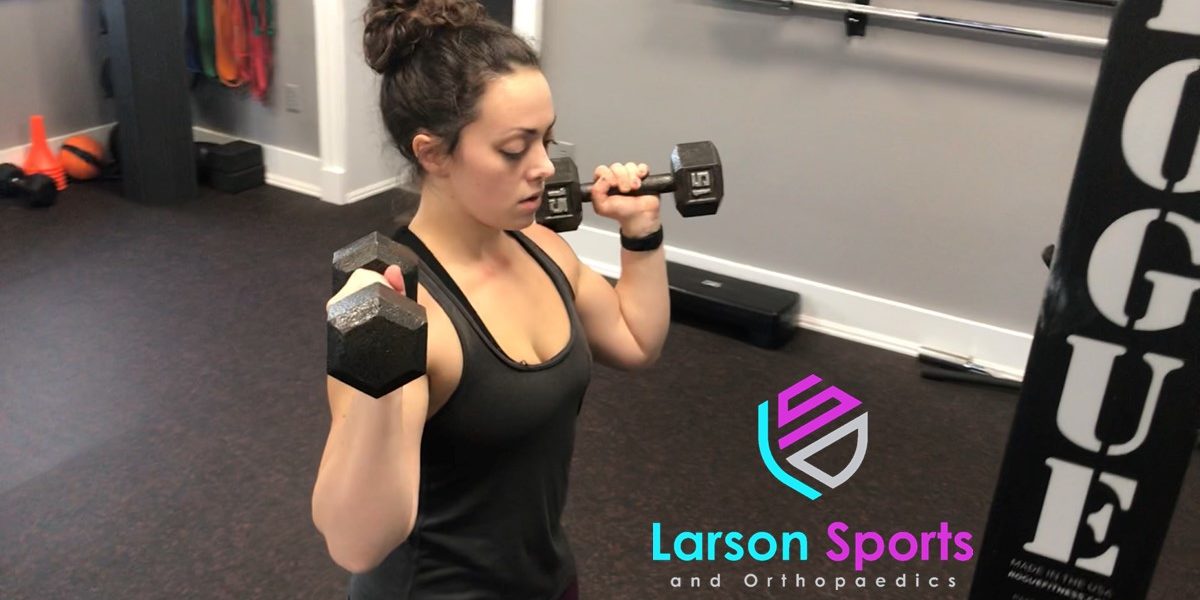If you are looking to stop shoulder pain when doing an overhead press, you’ve come to the right place. Shoulder press pain is very common, and so are the causes. I see way too many people at the gym who don’t know the proper positioning for overhead press. Somewhere along the line, they got bad advice and they are riding it right into SLAP Tear City.
Because that’s the problem you face if you keep lifting with awkward overhead press mechanics. SLAP tears are bad news, but easily avoidable. We’ll show you how!

Dr. James Larson is an orthopedic surgeon specializing in sports medicine and arthroscopic surgery. He also holds a CF-L1 certificate and is a Certified BFR Specialist. He supports weight training and high-intensity exercise throughout the lifespan. He started LSO to keep more people moving better, longer.
Fixing Your Overhead Press Form
The main problem is that people think they are supposed to have their arms straight to their sides, essentially forming a “T” with their arms. But that kind of shoulder position causes internal impingement on the rotator cuff and labrum. Keep that up for long enough and you’ll have pain, catching, and weakness due to the damage inside your shoulder.
Fortunately, we’ve got a very simple fix. In order to prevent this, most people need to bring their elbows further forward. Your arm and shoulder position should really be at about a 45-degree angle while doing an overhead press. They shouldn’t be all the way to the side nor directly in front of you. We want to keep the plane of motion in the same line as the shoulder blade itself.
Introducing the Scapular Plane
We tend to think of the body in terms of straight angles and squares; however, everything in your body is curved. While your shoulder blades are relatively straight and your arms lie at the side of your body, this doesn’t mean their plane of motion is perpendicular to the side of your body.
Your ribcage is curved, and your shoulder blades sit on that curve. This gives them a natural angle between 30 and 45 degrees off a flat plane. When you move your shoulders through that natural plane, they’re less likely to suffer from impingement, tendinitis, and rotator cuff irritation.
This plane is slightly different for everyone, but it is known as the scapular plane. Moving your shoulders in line with your scapula is called “scaption”. It is usually close to midway between shoulder flexion and shoulder abduction.
When we discuss shoulder range of motion, we often talk about “forward flexion” and “abduction”. Forward flexion is directly in front of the body, while abduction is 90 degrees to the side. However, “scaption” is the truly healthy pathway for your shoulders to move in. You’ll find your shoulders naturally fall into this position during a front rack, as well. This is the position your shoulder should be in whenever performing an overhead press.
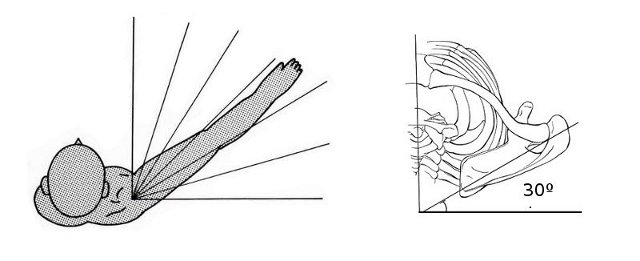
What is Internal Shoulder Impingement?
If you follow us on Instagram, you will have seen this picture before. This is an MRI image that demonstrates internal impingement and the tearing it can cause. When your arms are all the way to the side, the inside of your shoulder gets squished together. Then the rotator cuff attachment gets jammed right up against the labrum. When you add the motion of an overhead press and the weight of a barbell, you’ll pinch and then grind the labrum and cuff. And that’s a great way to cause a tear of one or both!
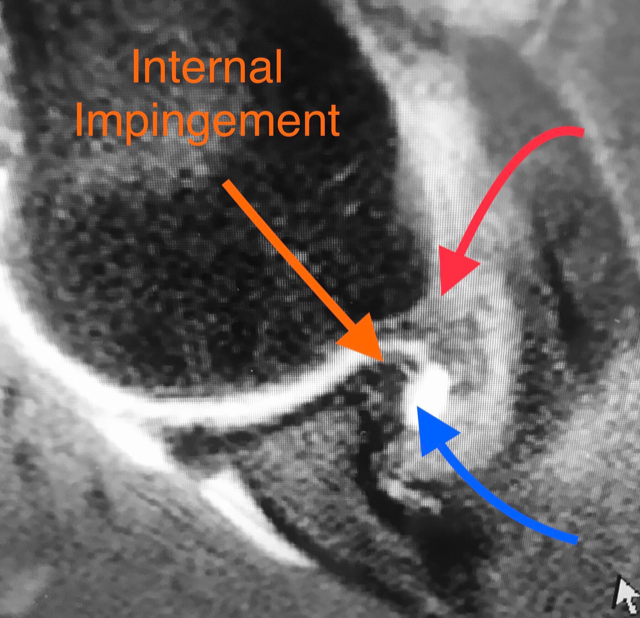
Hand Position During Barbell Overhead Press
One way to keep your shoulders moving in the true scapular plane is to watch your hand position. Gripping the barbell too wide will cause you to bring your arms too far to the side. You want your hands to be just a little wider than your shoulders while setting up for a barbell overhead press. An inch or so out from the shoulder is just about right. That will naturally bring your humerus into the same plane as the scapula, preventing internal impingement.
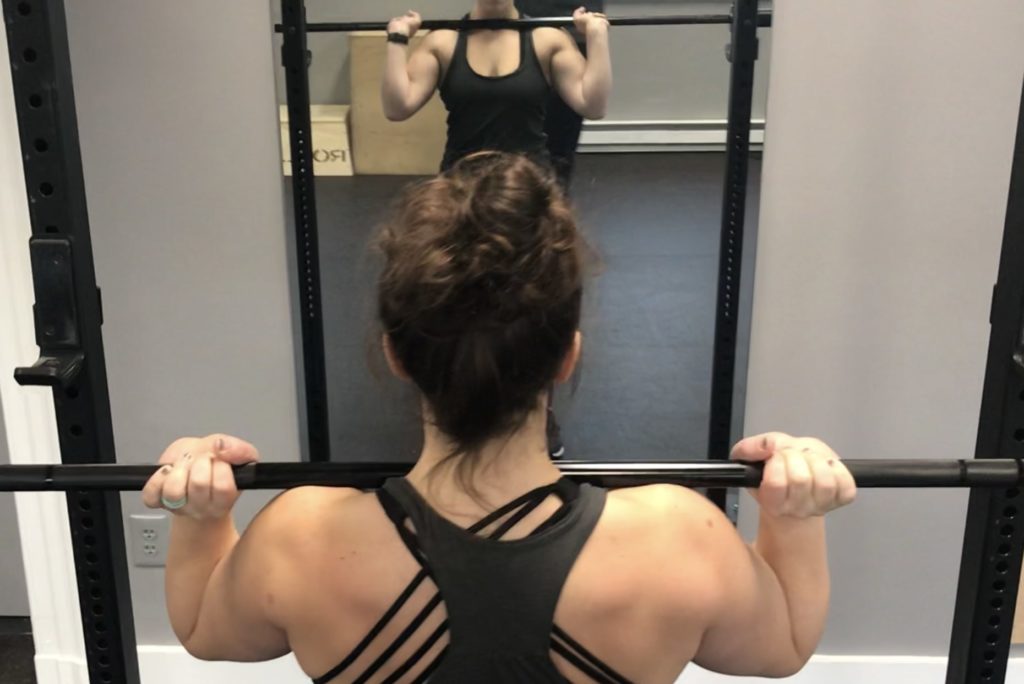
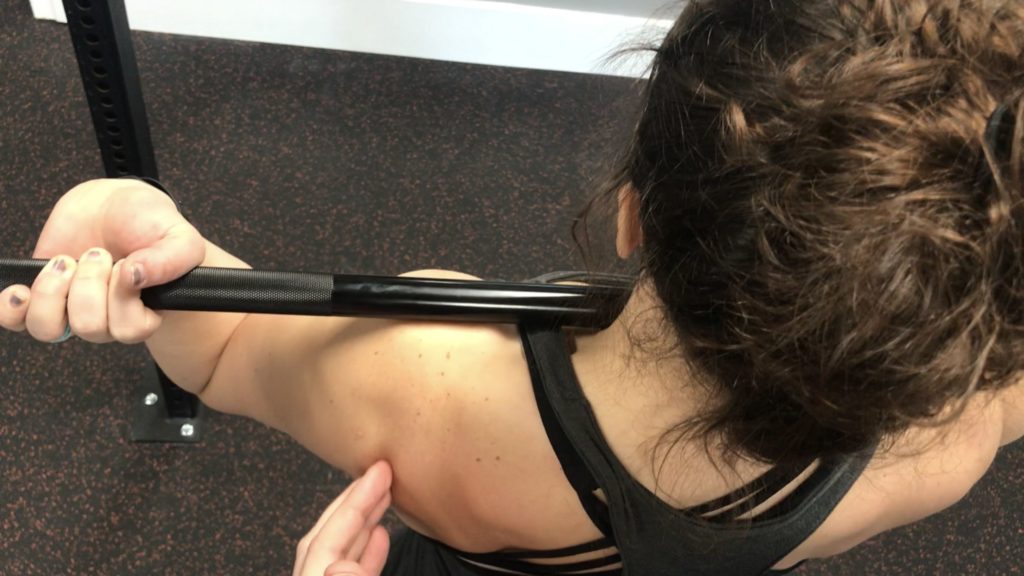
Dumbbell Position During Overhead Press
Many people use dumbbells to work their shoulders. And a dumbbell overhead press can be great for your shoulders, but only if your form is good. If you use dumbbells for pressing, remember to keep them at this same 45-degree angle. If you can draw a straight line from one dumbbell, through your head, and out to the other one – you are doing it wrong!


What if the shoulder pain doesn’t go away?
If you’ve been ignoring your body’s warning signs for too long, adjusting your shoulder press form may not relieve the pain right away. You’ve probably done some damage and it needs time to heal. So keep your shoulder position in the right plane and lower the decrease the weight until your shoulder doesn’t hurt. If your shoulder continues to hurt despite these changes, you should probably see a shoulder specialist. If you live in my area and have this problem, please schedule an appointment through my office.
**INSERT VIDEOS
If you want to double down on your recovery efforts, you might also like our Easy Exercises for Shoulder Pain! And if your shoulder pain is worse during bench press, you can find a fix for it in our article 4 Simple Tips To Stop Shoulder Pain During Bench Press.

